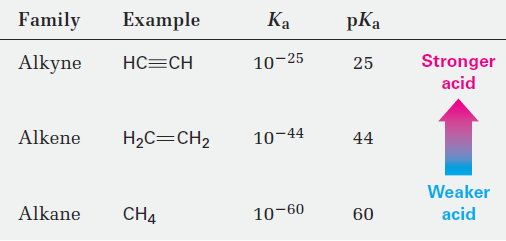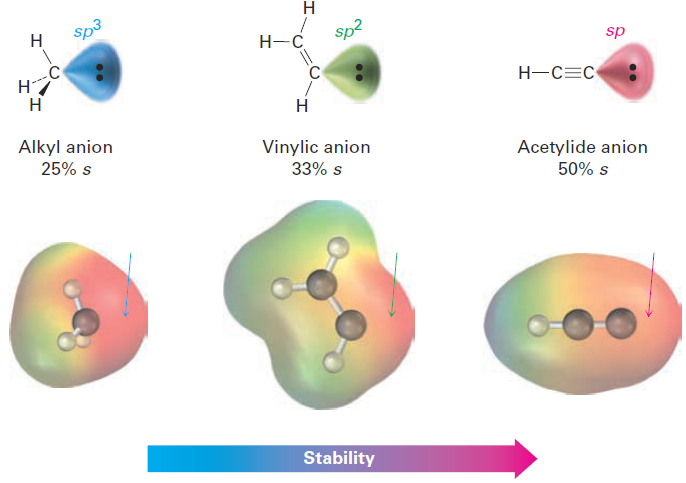

علم الكيمياء

تاريخ الكيمياء والعلماء المشاهير

التحاضير والتجارب الكيميائية

المخاطر والوقاية في الكيمياء

اخرى

مقالات متنوعة في علم الكيمياء

كيمياء عامة


الكيمياء التحليلية

مواضيع عامة في الكيمياء التحليلية

التحليل النوعي والكمي

التحليل الآلي (الطيفي)

طرق الفصل والتنقية


الكيمياء الحياتية

مواضيع عامة في الكيمياء الحياتية

الكاربوهيدرات

الاحماض الامينية والبروتينات

الانزيمات

الدهون

الاحماض النووية

الفيتامينات والمرافقات الانزيمية

الهرمونات


الكيمياء العضوية

مواضيع عامة في الكيمياء العضوية

الهايدروكاربونات

المركبات الوسطية وميكانيكيات التفاعلات العضوية

التشخيص العضوي

تجارب وتفاعلات في الكيمياء العضوية


الكيمياء الفيزيائية

مواضيع عامة في الكيمياء الفيزيائية

الكيمياء الحرارية

حركية التفاعلات الكيميائية

الكيمياء الكهربائية


الكيمياء اللاعضوية

مواضيع عامة في الكيمياء اللاعضوية

الجدول الدوري وخواص العناصر

نظريات التآصر الكيميائي

كيمياء العناصر الانتقالية ومركباتها المعقدة


مواضيع اخرى في الكيمياء

كيمياء النانو

الكيمياء السريرية

الكيمياء الطبية والدوائية

كيمياء الاغذية والنواتج الطبيعية

الكيمياء الجنائية


الكيمياء الصناعية

البترو كيمياويات

الكيمياء الخضراء

كيمياء البيئة

كيمياء البوليمرات

مواضيع عامة في الكيمياء الصناعية

الكيمياء الاشعاعية والنووية
Alkyne Acidity: Formation of Acetylide Anions
المؤلف:
John McMurry
المصدر:
Organic Chemistry
الجزء والصفحة:
9th. p 275
24-5-2017
6032
Alkyne Acidity: Formation of Acetylide Anions
The most striking difference between alkenes and alkynes is that terminal alkynes are relatively acidic. When a terminal alkyne is treated with a strong base, such as sodium amide, Na+ -NH2, the terminal hydrogen is removed and the corresponding acetylide anion is formed.

According to the Brّnsted–Lowry definition (Section 2-7), an acid is a substance that donates H1. Although we usually think of oxyacids (H2SO4, HNO3) or halogen acids (HCl, HBr) in this context, any compound containing a hydrogen atom can be an acid under the right circumstances. By measuring dissociation constants of different acids and expressing the results as pKa values, an acidity order can be established. Recall from Section 2-8 that a lower pKa corresponds to a stronger acid and a higher pKa corresponds to a weaker one.
Where do hydrocarbons lie on the acidity scale? As the data in Table 9-1 show, both methane (pKa ≈ 60) and ethylene (pKa = 44) are very weak acids and thus do not react with any of the common bases. Acetylene, however, has pKa = 25 and can be deprotonated by the conjugate base of any acid whose pKa is greater than 25. Amide ion (NH2-), for example, the conjugate base of ammonia (pKa = 35), is often used to deprotonate terminal alkynes.
Table 9-1 Acidity of Simple Hydrocarbons

Why are terminal alkynes more acidic than alkenes or alkanes? In other words, why are acetylide anions more stable than vinylic or alkyl anions? The simplest explanation involves the hybridization of the negatively charged carbon atom. An acetylide anion has an sp-hybridized carbon, so the negative charge resides in an orbital that has 50% “s character.” A vinylic anion has an sp2-hybridized carbon with 33% s character, and an alkyl anion (sp3) has only 25% s character. Because s orbitals are nearer the positive nucleus and lower in energy than p orbitals, the negative charge is stabilized to a greater extent in an orbital with higher s character (Figure 9-5).

Figure 9-5 A comparison of alkyl, vinylic, and acetylide anions. The acetylide anion, with sp hybridization, has more s character and is more stable. Electrostatic potential maps show that placing the negative charge closer to the carbon nucleus makes carbon appear less negative (red).
 الاكثر قراءة في الهايدروكاربونات
الاكثر قراءة في الهايدروكاربونات
 اخر الاخبار
اخر الاخبار
اخبار العتبة العباسية المقدسة

الآخبار الصحية















 قسم الشؤون الفكرية يصدر كتاباً يوثق تاريخ السدانة في العتبة العباسية المقدسة
قسم الشؤون الفكرية يصدر كتاباً يوثق تاريخ السدانة في العتبة العباسية المقدسة "المهمة".. إصدار قصصي يوثّق القصص الفائزة في مسابقة فتوى الدفاع المقدسة للقصة القصيرة
"المهمة".. إصدار قصصي يوثّق القصص الفائزة في مسابقة فتوى الدفاع المقدسة للقصة القصيرة (نوافذ).. إصدار أدبي يوثق القصص الفائزة في مسابقة الإمام العسكري (عليه السلام)
(نوافذ).. إصدار أدبي يوثق القصص الفائزة في مسابقة الإمام العسكري (عليه السلام)


















